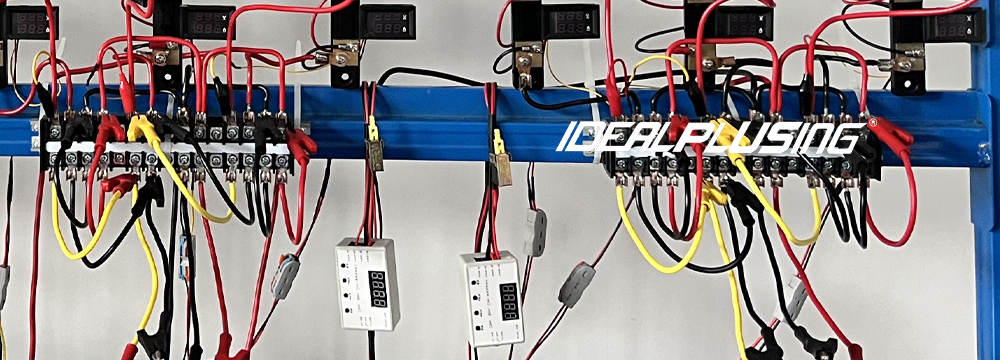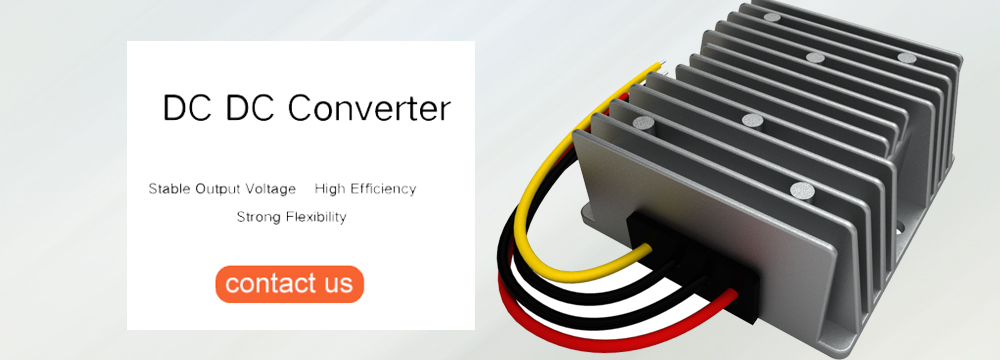In the fields of modern power electronics, communications and industrial control, DC-DC converters have become indispensable core equipment. It can convert DC power from one voltage level to another to meet power supply needs in different scenarios.
Among them, buck-type and boost-type DC-DC converters are the two most basic and widely used types. Although both rely on inductive energy storage and switching control in principle, there are significant differences in output ripple, application scenarios and optimization strategies.

Buck Converter
Step-down DC-DC converters, often called Buck Converters, can convert higher input voltages into lower output voltages and are widely used in fields such as powering automotive electronic equipment.
For example, high-voltage battery packs provide a stable power supply to low-voltage electronic systems in automobiles through step-down converters. Its core principle is to control the inductor to store and release energy through switching elements (such as MOSFET).
When the switch is on, the inductor accumulates energy; when the switch is off, the inductor maintains the stability of the output voltage by releasing charge. The capacitor is responsible for smoothing the ripples in the inductor current and reducing voltage fluctuations.
Therefore, the output ripple of a buck converter is usually low and constant over a certain load range. However, at light loads, changes in operating mode may cause changes in ripple voltage.
Boost Converter
Compared with the buck type, the boost DC-DC converter (Boost Converter) boosts a lower input voltage to a higher output voltage and is commonly used in applications such as solar photovoltaic systems.
The switching element controls the process of storing and releasing energy in the inductor in a similar manner, but the supply current of the boost converter exhibits intermittent pulses, and the output capacitor needs to handle greater filtering challenges.
Since the capacitor can only charge when the high side of the switch is off, the output voltage fluctuates even more. In addition, the output voltage of a boost converter is usually high, and the effective capacitance of the capacitor may be significantly reduced at high voltages, causing the ripple voltage to further increase.
This poses a challenge to the transient response characteristics and stability of the system, especially under high-frequency operating conditions.
In order to reduce the output ripple and improve the performance of the DC-DC converter, the following optimization measures are widely adopted: First, selecting the appropriate capacitor is key. Low ESR/ESL capacitors such as multilayer ceramic capacitors (MLCC) can significantly improve the filtering effect, and ripple can be further reduced by increasing the capacitance or connecting multiple capacitors in parallel.
Secondly, inductor design is equally important. Reasonable selection of inductance value, material and structure can help balance ripple current and response speed.
In addition, improvements in control strategies, such as PWM/PFM hybrid control and adaptive control, can dynamically adjust the switching frequency and duty cycle under different loads to optimize the ripple effect.
At the same time, PCB layout and heat dissipation design cannot be ignored. Minimizing trace length and parasitic inductance, using planar transformers, and proper heat dissipation management can effectively suppress voltage fluctuations and improve system stability.
Future Development of DC DC Converters
With the advancement of electronic technology, DC-DC converters are developing in the direction of high frequency, integration, intelligence and greening.
High-frequency operation can not only reduce the size of the device, but also improve response speed and conversion efficiency. In addition, system-in-package (SIP) and chip-level integration (SoC) make DC-DC converters more compact and easier to deploy.
The introduction of digitization and intelligence enables DC-DC converters to accurately control voltage and current, and also has remote monitoring and fault prediction functions, significantly improving reliability.
In the context of energy and environmental protection, how to further improve efficiency and reduce standby power consumption has become an important goal for future development. The modular design and scalability make it show excellent adaptability in different application scenarios.
Buck-type and boost-type DC-DC converters have their own characteristics in terms of technical principles, application scenarios and output ripple performance.
Buck converters have stable output voltage and small ripple, and are suitable for converting high voltage to low voltage. Boost converters, on the other hand, face greater output ripple challenges and need to rely on efficient filtering and optimized design.
By selecting high-performance capacitors, inductors and improving control strategies, the output ripple can be effectively reduced and the overall performance of the converter improved.
Looking to the future, with the continuous development of new materials and new technologies, DC-DC converters will continue to make breakthroughs in high frequency, integration and green energy saving, providing better solutions for stable power supply of electronic systems.






